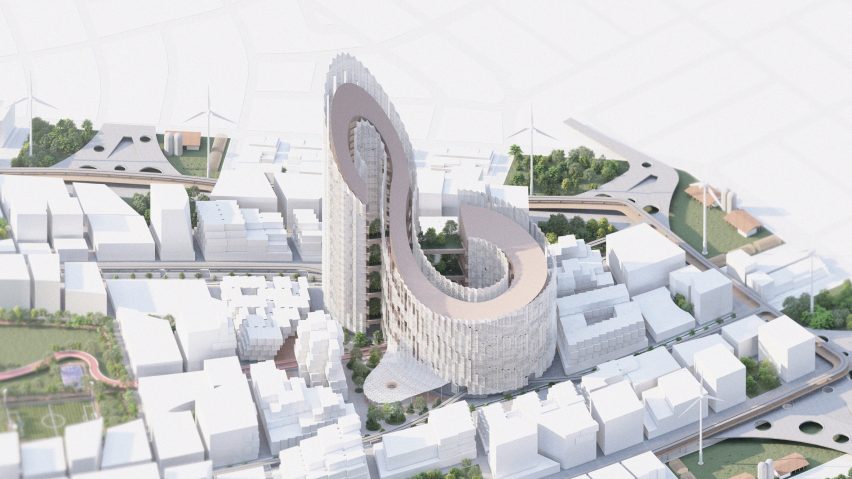
Fifteen design projects by graduates of Savannah College of Art and Design
Dezeen School Shows: an olive-hued lounge chair that forms part of a three-piece furniture collection and an education centre in Peru are included in Dezeen's latest school show by graduates of Savannah College of Art and Design.
A bent, curving plywood chair with a silicon seat and a study that looks into how lighting, HVAC systems and furniture can impact student learning are also among the projects featured in the show.
Savannah College of Art and Design
School: School of Building Arts
Course: Master of Architecture, BFA Architecture, MFA Furniture Design, BFA Furniture Design, MFA Interior Design, BFA Interior Design, BFA Preservation Design
School Statement:
"The Savannah College of Art and Design (SCAD) is the preeminent source of knowledge in the building arts. With preservation design and interior design programs as two of the university's original eight programs, SCAD has prepared talented students for professional careers in this multibillion-dollar market for more than 40 years.
SCAD enrols upwards of 1,200 building arts students across six disciplines focused on architecture, interior design, furniture design and other building arts-related industries. It is the first and only university to offer an MFA in Architectural History."
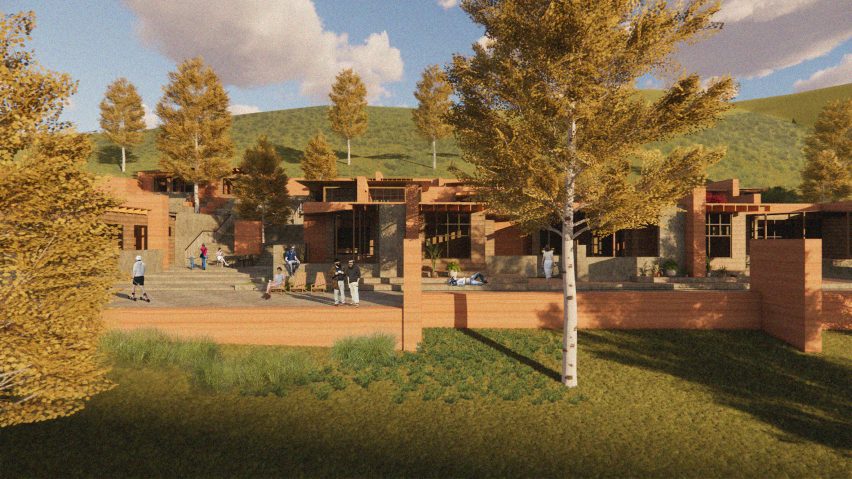
Homegrove by Andrew White
"Avon, Colorado, a small town two hours west of Denver in the rocky mountains, is in the midst of an affordable housing crisis. This town along with nearby Vail, Colorado, hosts a luxury ski industry and tourists comprise much of the population, especially in the winter months.
"The limited flat land is developed with some housing, hotels, and vacation rentals for the transient community. The mountainous terrain is what remains. Other cities of similar terrain must also address this issue and take advantage of underutilized slopes.
"This project, Homegrove, proposes a Habitat for Humanity sustainable solution with concrete as a primary material. The Eagle River Valley can be understood in terms of its north and south face. The north face is hidden from the sun, creating conditions for the ski slopes. The south face is exposed to the sun.
"Ancient humans were discovered to live here year-round, even through harsh winters, by using the warmth of the exposed south face. More heat from the sun can provide greater comfort in the cold. In these harsh conditions, it is stronger to act together. In this way, this is a grove of homes that shares arteries and mimics the Aspen groves of the region. Many notes are taken from nature in a place where it is a primary focus. The working class who fosters that relationship for many can call this place home and continue to define the region."
Graduate: Andrew White
Course: BFA Architecture
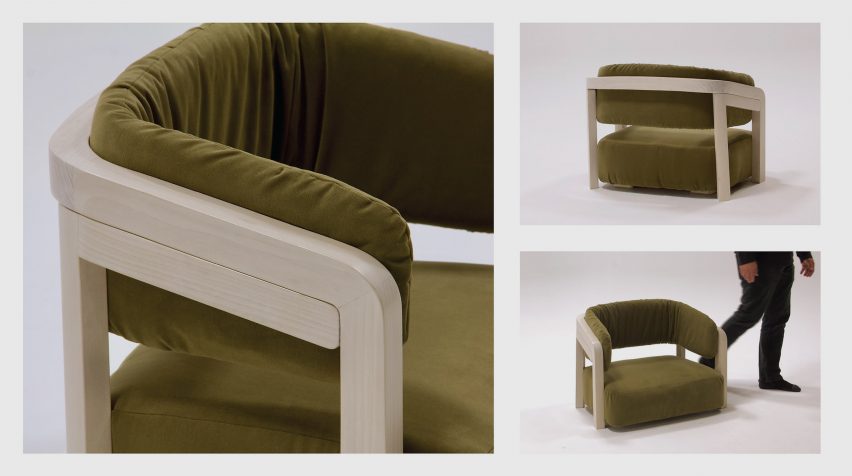
Olive by Lulu Pennell
"A three-piece collection following the upcoming Zen Interior trend. Research suggests people are trying to feel more connected to nature post-pandemic, with a surge towards minimalism and Scandinavian design trends. Olive brings you lower to the ground, proven to help a person feel more balanced and connected to Earth. Soft curves and earth-toned textiles help further create a more tranquil experience."
Graduate: Lulu Pennell
Course: BFA Interior Design
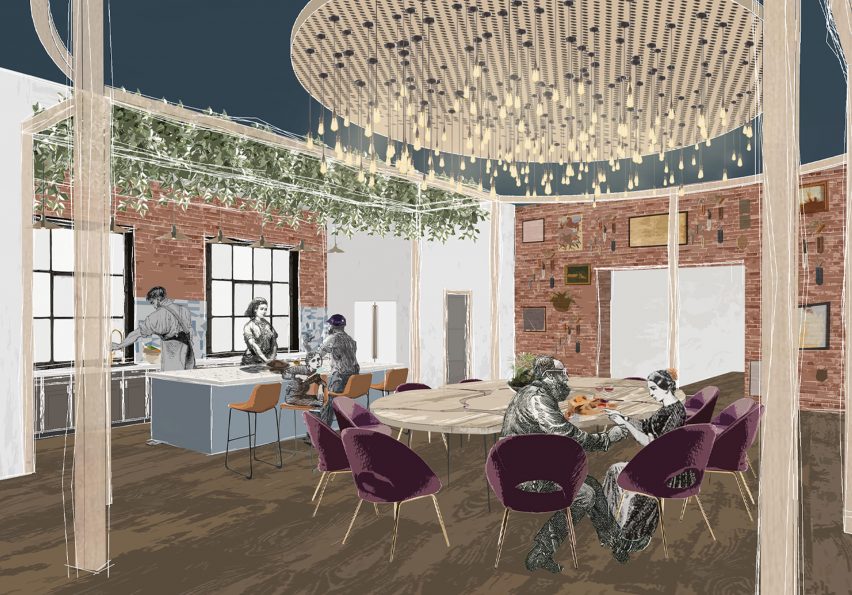
Taproot by Madeline Jensen
"Because of the negative physical and psychological effects of living in areas of concentrated poverty, reimagining a safe and supportive living community for low-income residents is a necessary foundation for increasing their quality of life. Taproot is an adaptive reuse mixed-income, mixed-use, living community devoted to reimagining a safe and supportive living environment for low-income residents, as well as providing the materials and setting necessary to increase the wellbeing of all residents.
"Taproot hopes to redefine mixed-income living by achieving three main objectives. First, the facilitation of a strong community network among all residents through the creation of hubs, both physical and virtual, to attract people of like minds together. Second, the creation of an innate sense of safety for all residents by designing spaces that rely on informal and natural surveillance rather than human-driven policing techniques.
"Lastly, providing ease of access to everyday necessary resources for residents by integrating them into the immediate surroundings of their homes. If Taproot can successfully coordinate these three objectives into its foundation, it will serve as a model to address one of the most pressing problems currently facing American society and break the cycle of despair and failure that often exists at the lower end of the socio-economic spectrum."
Graduate:Madeline Jensen
Course: BFA Interior Design
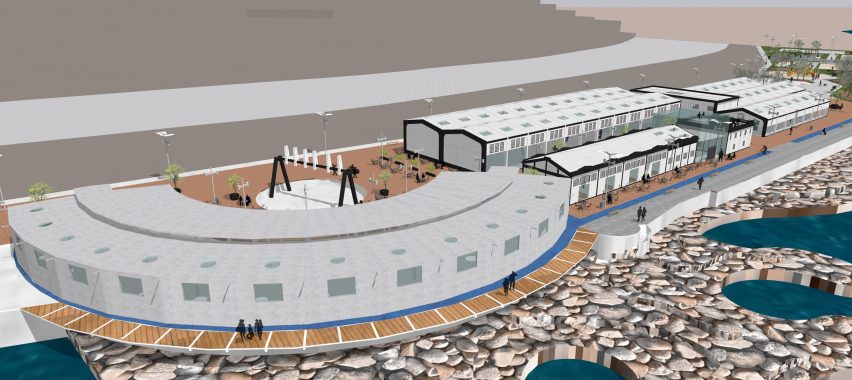
Espacio Maestranza by Carolina Olivares Rivera
"Espacio Maestranza is a waterfront revitalization project focused on community revitalization, heritage preservation, planning, entrepreneurial strategies, and sustainable practices.
"Located in Valparaiso, Chile, the site's design adaptively reuses an existing historic railroad roundhouse while introducing new construction and pedestrian pathways to develop a cohesive waterfront space. A sport and cultural facility with a mixed-use development that connects the community along the water."
Graduate: Carolina Olivares Rivera
Course: MFA Preservation Design
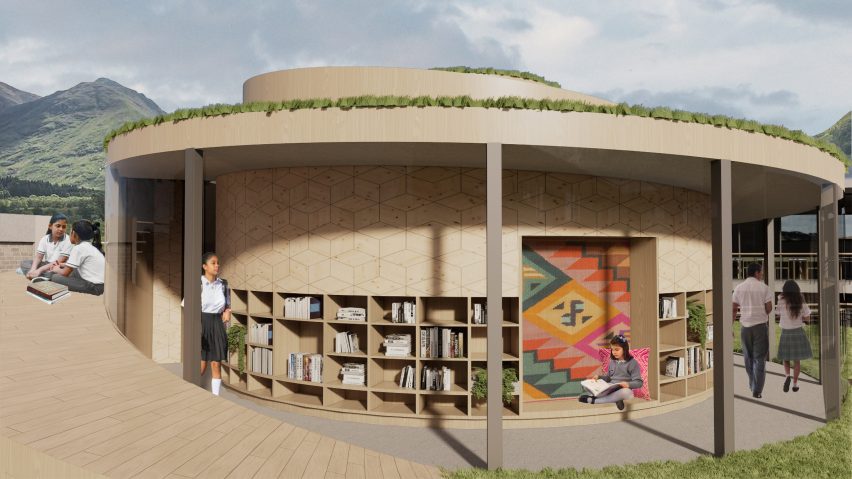
Ayni by Marialejandra Quevedo
"Young girls in Peru experience additional learning obstacles as a result of gender-based discrimination and stereotypes perpetuated by their learning environment. Their need to conform to social norms and behavior standards puts a limit on their dreams, creativity, and future, as their actions and thoughts start to be governed by cultural roles and labels that ultimately form and define them as individuals.
"Ayni's innovative and gender-responsive design frees young adults from damaging social constructs, becoming the driving force behind achieving a better and equal education for all. It recognizes the forgotten potential of a well-designed learning environment by using it as a strategic tool to improve the schooling experience of girls and all students in developing countries like Peru.
"Ayni is a much-needed update to the uninspiring and factory-like environments by respecting individuality, acknowledging diversity, and celebrating culture."
Graduate: Marialejandra Quevedo
Course: BFA Interior Design
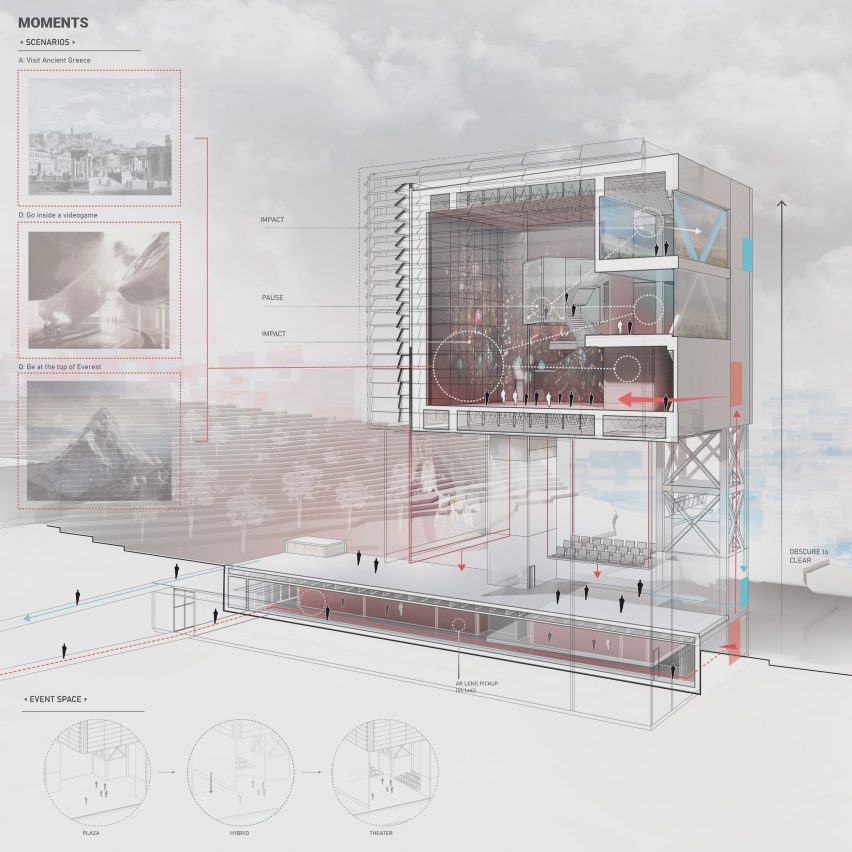
The Metaphysical Museum of Reality by Daniel Jabara
"The primary goal of The Metaphysical Museum of Reality was to make The French Broad River Park in Asheville, North Carolina, a node that connects the city to itself and to the rest of the world. In order to achieve that, I started exploring the intersection between architecture and technology.
"By contrasting how we interact through the Internet and how we interact in the real world, I came to the realization that by overlaying a virtual space on a physical space one could be inside both the 'Metaverse' and the real world simultaneously, thus generating an experience that transcends the visitor into a metaphysical state.
"To achieve this holistic experience there are many factors involved, from the hidden structure hiding the cantilever to the interior responsive voxel screens. Externally, the LEDs allow for anyone, even a passerby, to interface with the building on some level, which in turn democratizes the space. Sustainability within the project was addressed by cladding the building with photovoltaics and by using bio-mass gathered from the site to generate electricity."
Graduate: Daniel Jabara
Course: BFA Architecture
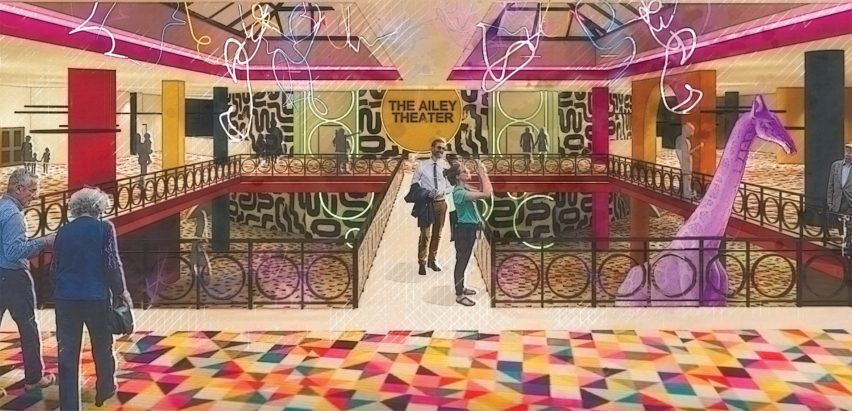
Adaptive Reuse of The Savannah Mall by Emily Schripsema
"Looking into the next chapter of preservation, what typologies will be relevant in the next twenty years? Following the National Register of Historic Place's fifty-year eligibility guideline, the 1980s and 1990s will be eligible.
"One of the most popular typologies of that time was the shopping mall. American shopping malls have contributed to broad patterns in our history. They have helped to further the boom of consumerism and suburbanization and generations of young Americans curated their identities while wandering the halls. With the rise of e-commerce, malls are ghost towns and have become blights on their communities.
"To prevent the erasure of a cultural landscape that has defined generations of shoppers, one needs to consider the contributions of shopping malls to American culture and their potential to provide for their communities once more. Advocating for adaptive reuse, this research aims to provide preservation enthusiasts and developers with a new design approach.
"Using the Savannah Mall, in Savannah, Georgia, as a case study, the proposed design strategies explore a future-forward approach, yet remain sensitive to preservation. The National Register of Historic Places' eligibility criteria and the Secretary of Interior's Standards for Rehabilitation will be used to ensure the cultural and architectural heritage are highlighted."
Graduate: Emily Schripsema
Course: MFA Preservation Design
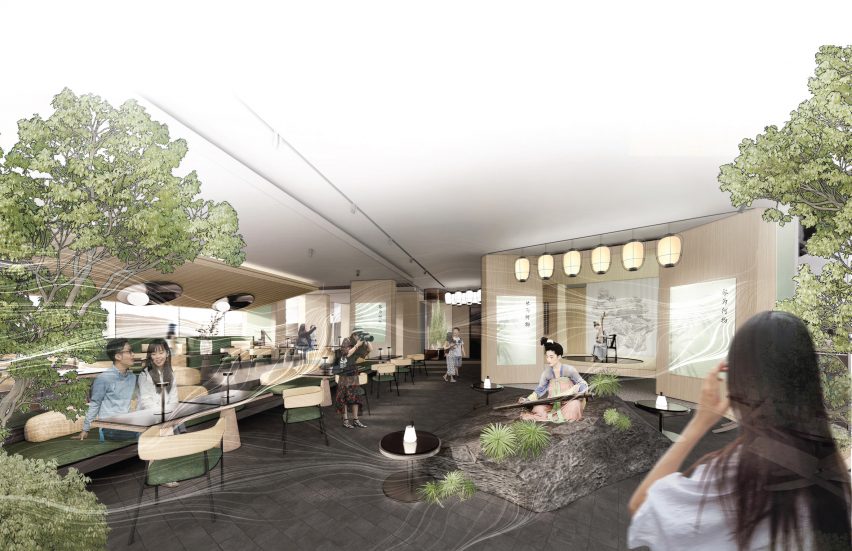
Music Bar by Shiyu Wu
"China's traditional music culture has its origins in rural life and is rapidly disappearing as urbanization increases. While ancient China used musical instruments to facilitate social interaction, their importance in urban life has declined. The growing interest in traditional culture among young people today is, however, forcing Chinese music to search for innovative ways to integrate traditional performance with modern lifestyles.
"The purpose of this study is to integrate Chinese traditional music heritage with contemporary youth culture to promote mainstream appreciation and pass along the tradition to the next generation. The literature review highlights Generation Z's desire to redefine the traditional music experience to demonstrate their authentic identity and need for stress relief, approaches to subvert established concert formats, and theories of Chinese music's uniqueness and spiritual energy.
"Research theories include existentialism theory, artistic conception, narrative design theory, and place-making theory. Research methods include surveys, case studies, and interviews to understand the social needs of Generation Z, the future visions of instrumentalists, and the design of music venues and third places that incorporate cultural identity.
"The design proposes the creation of a popular third place featuring traditional Chinese music that will enhance the vitality of traditional music in modern society by promoting social interaction, encouraging the integration of cultural heritage with Generation Z culture, and providing an 'escape from reality' music experience."
Graduate: Shiyu Wu
Course: MFA Interior Design, MA Furniture Design
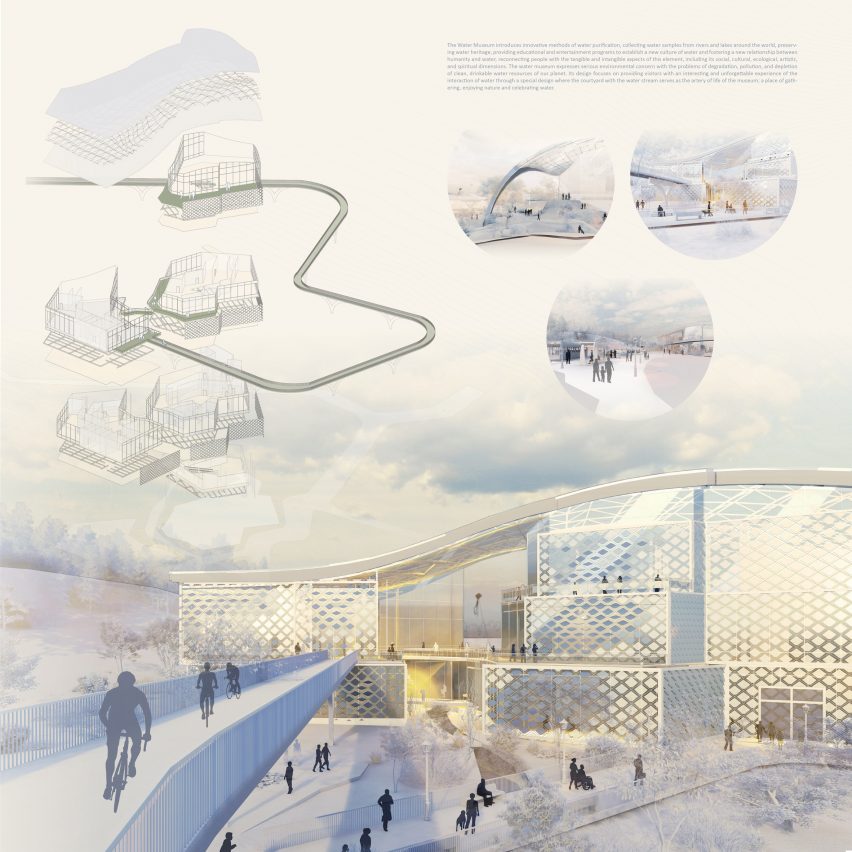
The Water Museum by Karalina Shastavets
"The Water Museum introduces innovative methods of water treatment, collects water samples from rivers and lakes around the world, and provides educational and entertainment programs. The Water Museum visitors and corporate customers receive thought-provoking exposure to water, including engaging water experiments, inventions, installations, and teaching, that reveal the value of pursuing water conservation. The Water Museum expresses serious environmental concern about the degradation, pollution, and depletion of clean drinking water resources on our planet.
"The Water Museum is located in Asheville, North Carolina, near the French Broad River which is one of the oldest rivers in the world. The water stream is created that flows into the site. This not only makes it possible to study water and implement system purification but also enhances flora and fauna and raises the value of the site from a design and entertainment point of view. The flow of water divides the Water Museum into two parts, which resembles a canyon where the river washed away the walls of the rocks, creating a unique geometry.
"The typology of the building consists of three important spaces: the first part of the building is a public exhibition, the second is semi-private, and the third space in the middle serves as the artery of life of the museum: a place of gathering, enjoying nature and celebrating water. The Water Museum seeks a new culture of water and the strengthening of a new relationship between humanity and water, including its social, cultural, environmental, artistic, and spiritual dimensions."
Graduate: Karalina Shastavets
Course: BFA Architecture

Urban Arcology by Mateo Mantilla Aya
"This thesis is based on the concept of the Arcology, developed by the Italian architect Paolo Soleri, who was aware that cities were not adequate for humans since they were perceived as something chaotic and detrimental to our well-being. As a consequence of his awareness, Soleri came up with Arcology (architecture and ecology): a concept for cities that presents an alternative to better, less disruptive ways of living, by letting nature and architecture intertwine.
"While Soleri's Arcology is defined by a number of factors – one of which is that it needs to be sited in the middle of an open and uncluttered landscape – this thesis explores the impact of an Arcology in the urban context of Bogota, Colombia. This exploration will allow us to see how the Arcology needs to change to fit its environment, the impact it causes on its surroundings, and how the experiences within this Arcology can better the user's lives in an urbanistic and architectural manner; all of these will lead us to find – what is the Urban Arcology?"
Graduate: Mateo Mantilla Aya
Course: MA Architecture
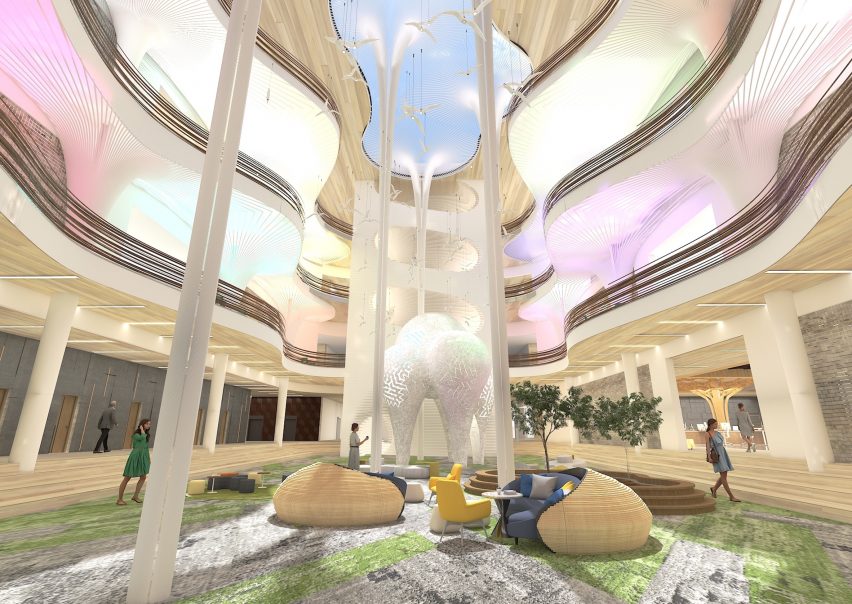
Gull Sight Student Study Center by Tony Wu
"Basic design such as lighting, a HVAC system, furniture, color, and layout can help students comfortably study in the space and curb students' attempts to avoid school and academic tasks. A beautiful view with natural elements and sound can help students better focus on their tasks and restore their attention when reaching their limit.
"A creative, customized and unique built-in can increase the connection between the students and the space. Moreover, once attached to a certain place, greater memories will be produced. Personal influence, face-to-face interaction, and informal communication can not only increase intimacy but also ignite motivation and the desire to win. Providing a space where students can evaluate their abilities, study habits and behavior can help them develop a passion toward a chosen academic project.
"By combining all the elements together, we are providing our students a place where they want to come, to stay longer and to form attachments. They will form good study habits by performing the correct way of studying repeatedly. They will also follow a more positive pattern in forming friendships while immersed in a positive atmosphere. Eventually, their study behavior will be affected and changed even without the study space, because while enjoying a comfortable study experience in sight of the student center Gull they have acquired the habit of performing well over and over again."
Graduate: Tony Wu
Course: MFA Interior Design

Intertwine: Transit Reconnecting Loose Ends by Miloni Shah
"A city is formed by different layers: buildings, open spaces, and humans. In the layer of planning and development, transit plays an important role in interconnecting the city and providing ease in commuting for the people. Brno is the historical capital of the Czech Republic, and still holds a lot of cultural potential.
"The current situation of the transit has lost its importance in the growth and expansion of the city while facing a lot of difficulties to cater to more trains connecting different parts of the Czech Republic, as well as Europe. This also shows a larger impact on the social lifestyle of the city. It is not user-friendly and parts of the transit system are disconnected from each other.
"As humans are the users of both the city and its transit system, it is necessary to understand how the city functions and what role the transit system plays. Further understanding can help in identifying the areas around the transit system that can potentially be inviting and people to use. This paves the way for a human-centric design where the inter-related and inter-woven fabric of social interaction connects the city."
Graduate: Miloni Shah
Course: MA Architecture
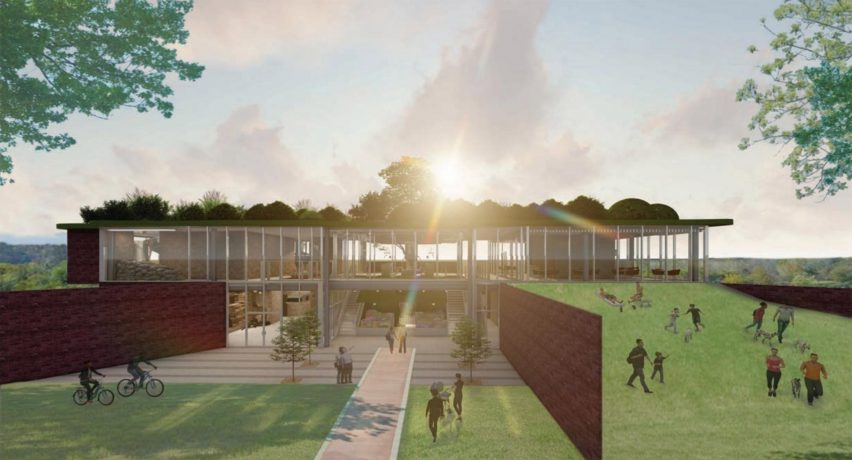
The Bond of Border RV Resort by Tzuying Wang
"Travel has been one of the most influenced portions by the Covid-19 pandemic. The high risk of air travel led to the explosion of recreational vehicle (RV) trips, especially in the US. The Bond of Border provides a preferable RV resort for travellers to rejuvenate their mind and body by applying the idea of a tree ring and the similarity it has to the human lifespan, as well as bringing the RV culture through the retro RV airstream look.
"We aim to create a cluster of multi-functional services for relaxing in the outdoor garden, socializing in the green gathering space, and recharging in the fresh market. To raise environmental awareness and sustainability, the green wall consisting of plants and the green roof not only brings the outdoors in but also reduces the heat island effect.
"An interactive gallery and pet cafe give the opportunity to reshape the harmony between individual and collective; and eventually, the space can hold local events and exhibit work from the local artists to help revive local businesses and tourism."
Graduate: Tzuying Wang
Course: BFA Interior Design
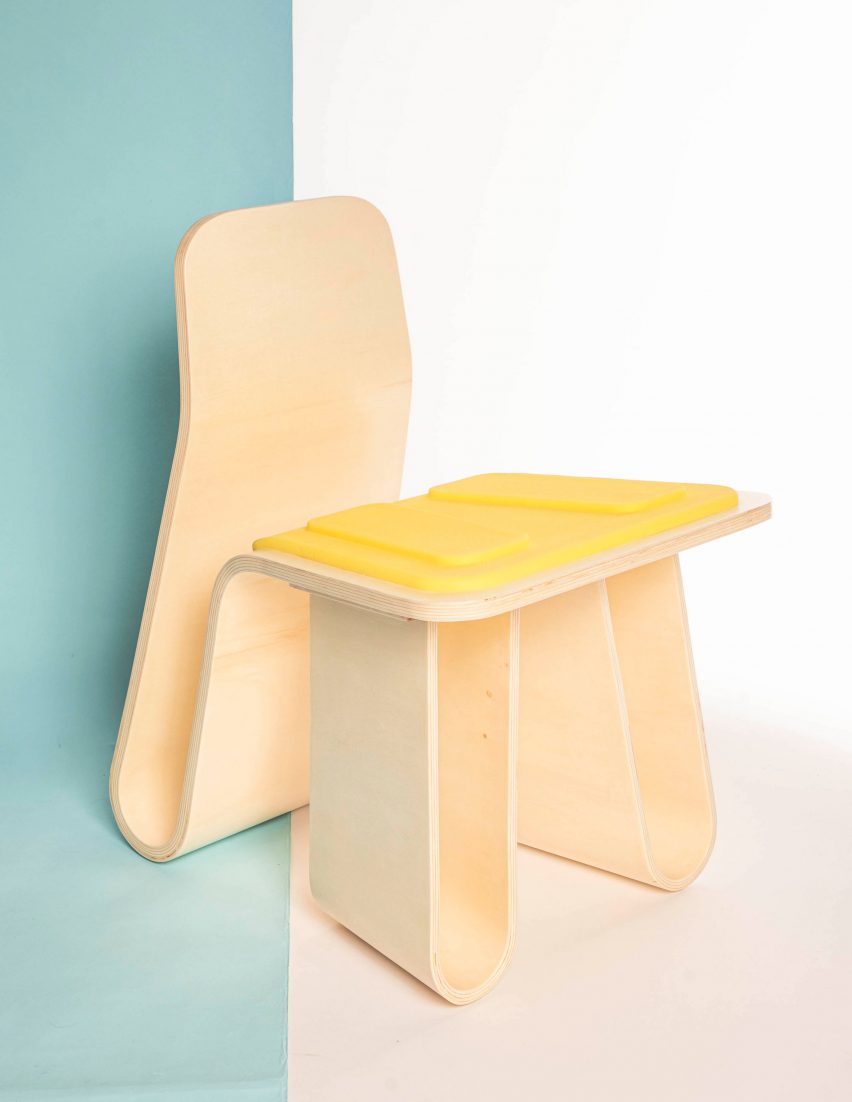
A Glimpse of What Ain't There by Marcelo Suro
"A Glimpse of What Ain't There is a low boy lounge chair composed of a silicon cushion, bent plywood seat, backrest and legs. By using traditional wood, bending materials, classic techniques and new synthetic materials, this chair presents a set of juxtapositions that work in tandem to convey a sense of dualism – between what is there and what is not, what is in and what is out, and what is soft and what is hard."
Graduate: Marcelo Suro
Course: BFA Industrial Design

Destigmatizing Eldercare in the United States by Sean Payne
"We are about to go through the largest expansion of senior care architecture the world has ever seen. With our retirement population expected to double within the next 20 years and senior-oriented construction to follow, we are at an important point in the evolution of senior care architecture to correct shortcomings. Senior architecture of today is socially stigmatizing, isolated, inflexible, and hardly meets the needs of seniors beyond just sustaining life.
"This thesis intends to push the boundaries of senior architecture through an analysis of historical, social, and biological connections to architecture and how we can redefine what senior architecture can be within itself and the community."
Graduate: Sean Payne
Course: MA Architecture
Partnership content
This school show is a partnership between Dezeen and Savannah College of Art and Design. Find out more about Dezeen partnership content here.